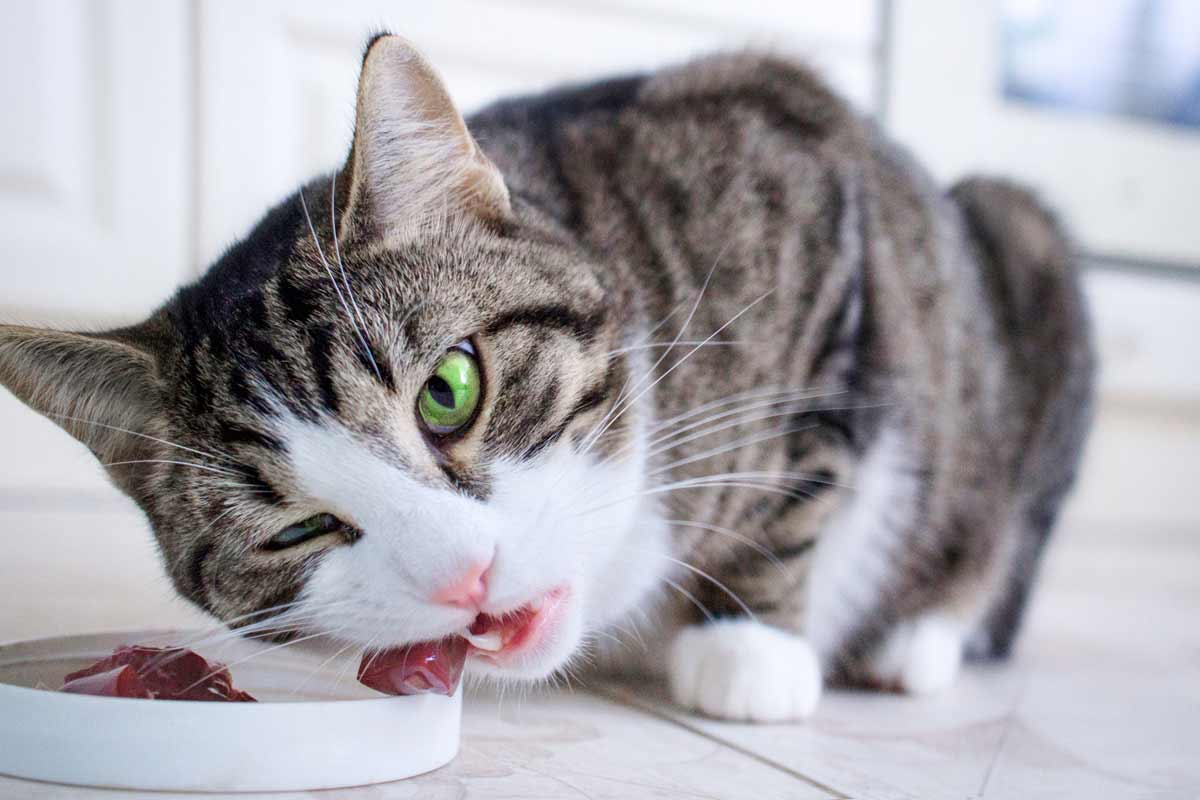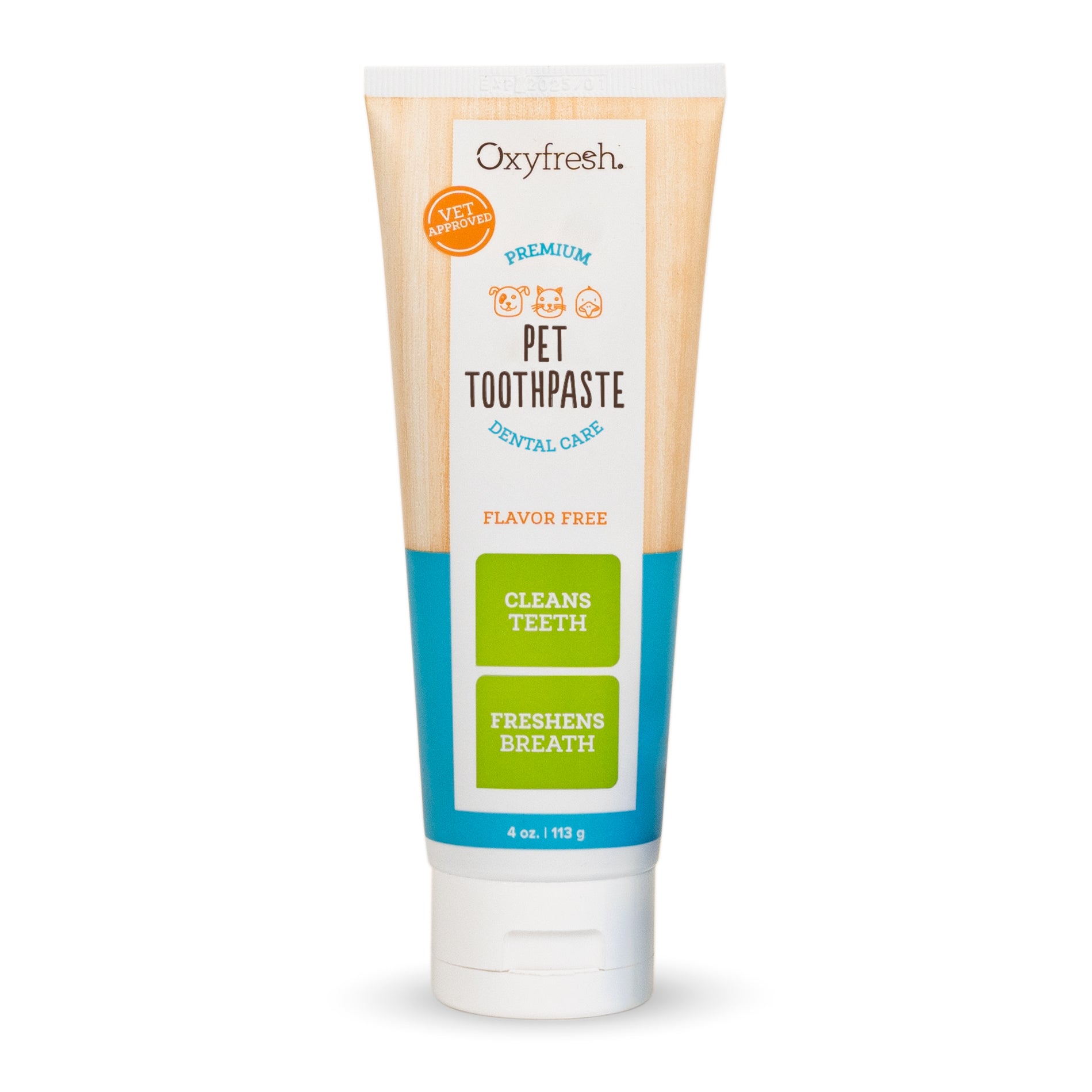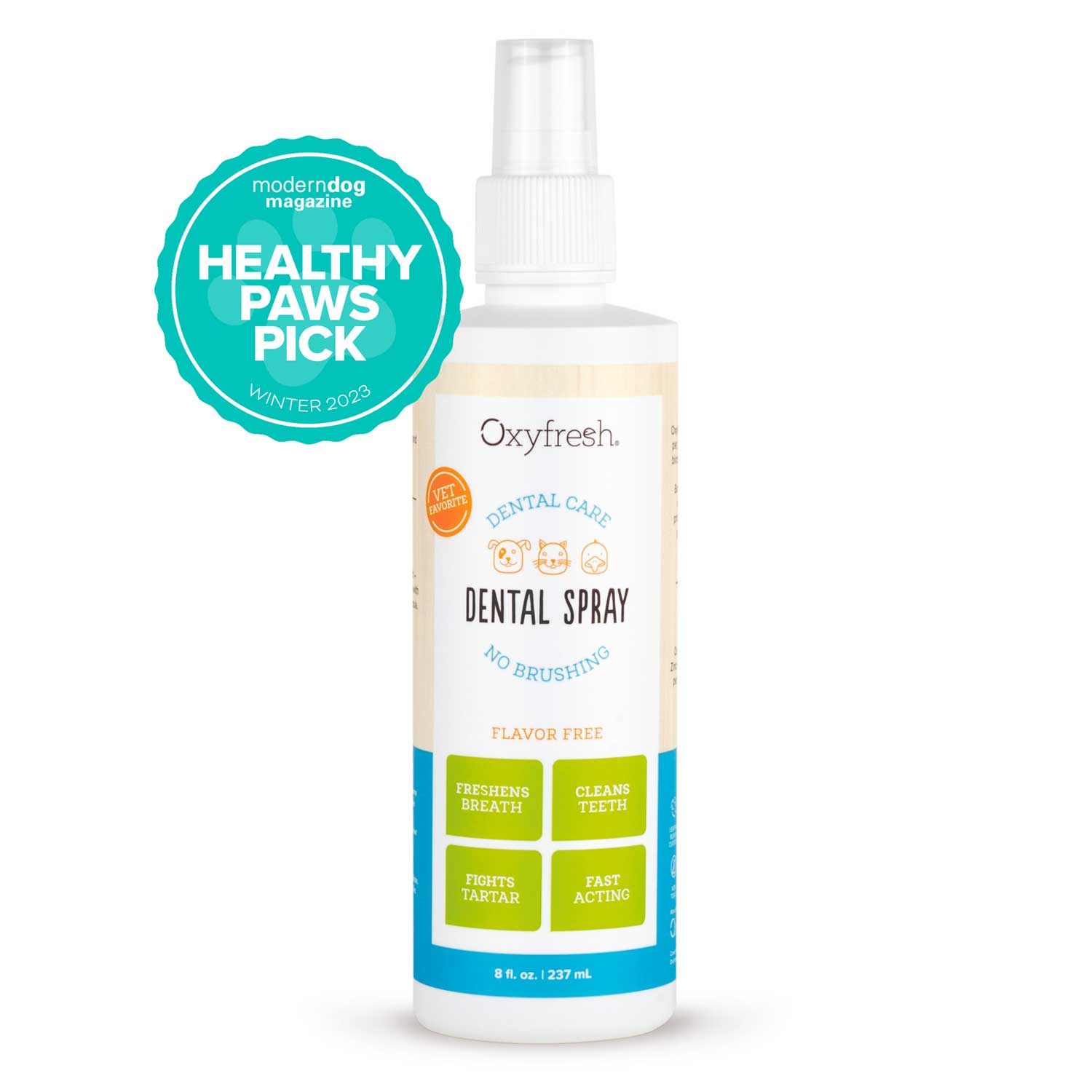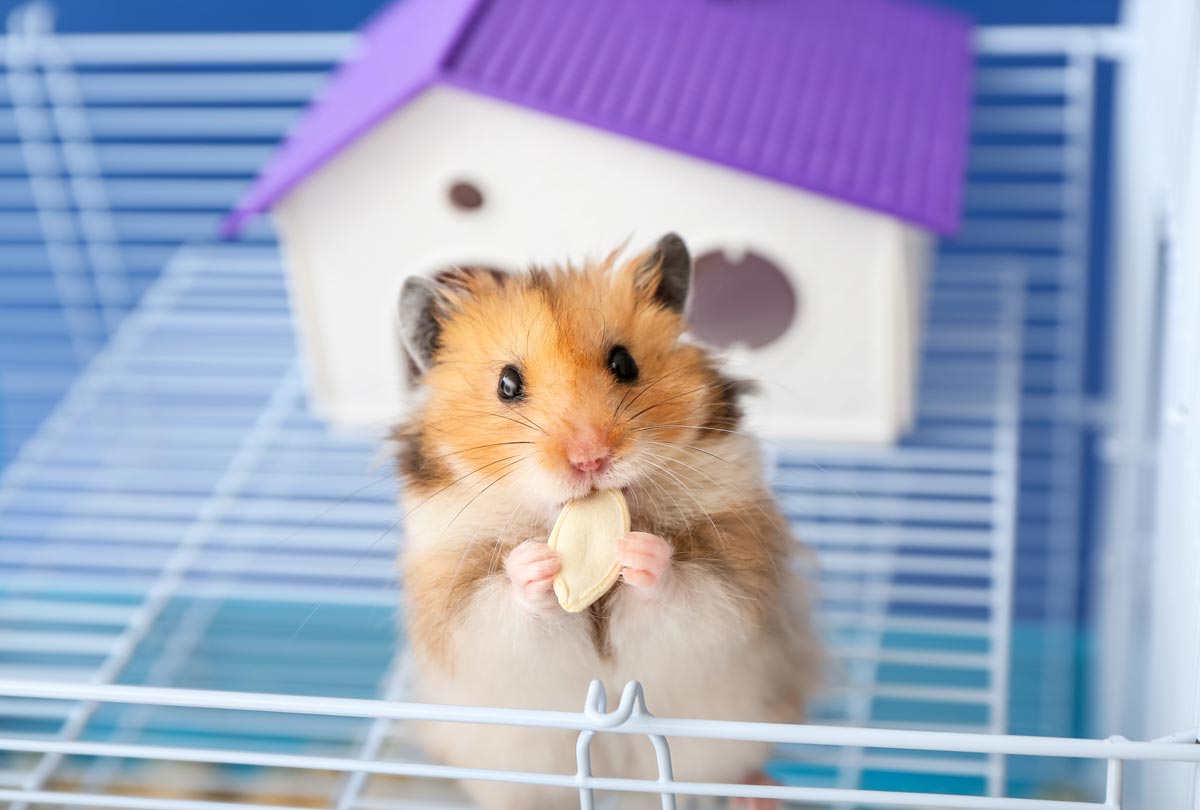When it comes to pets, cats are very low maintenance. They don’t bark at the UPS driver or demand a walk two times a day. But don’t let their low-key nature fool you: cats still need dental care.
Whether you’re a hands-off or go-full-throttle type, there’s a cat dental care routine for you. But look before you leap! Read on as we debunk seven common myths of cat dental care and give you some helpful tips too.
7 Common Cat Dental Care Myths
Myth #1: Cats Hate Having Their Teeth Brushed
For many cats, tooth brushing isn’t high on their list of "fun things to occupy my time." However, if you start brushing your cat’s teeth when they’re a kitten, they may actually enjoy it throughout their lifetime.
Even if you don’t have a kitten, it’s not too late to give tooth brushing with your older cat a try, as it’s the most effective way to get their teeth clean and prevent periodontal disease.
Cat Toothbrushing Tips
- Slow and steady. The best thing to do when attempting cat tooth brushing is to go slow. A few weeks leading up to the "big event," dip your finger in tuna juice or broth several times a week, then rub your finger along your cat’s teeth and gums. This will get them used to you touching their mouth.
- Pawsitive praise. You’ll want to praise your cat the whole time, talk calmly, and give a treat afterward, even if tooth brushing was a "hair-raising" experience. That way, your cat will come to associate tooth brushing as a positive.
- Be choosy about your cat toothpaste: As appealing as chicken, liver or peanut butter toothpastes may sound for your cat, they can smell bad and taste quite funky. This can make tooth brushing more difficult. Instead, opt for a flavor- and scent-free toothpaste like Oxyfresh Pet Dental Gel Toothpaste. It instantly freshens bad cat breath and fights plaque without the weird flavor coverups. It’s also free of baking soda, an ingredient that can upset a cat’s stomach.
Myth #2: Brushing Cat Teeth Once in a Blue Moon Will Yield Benefits
Sadly, this is just not true. Kind of like if you only brushed your own teeth once a week, you wouldn’t notice any positives. Instead, your breath would be worse, and the plaque on your teeth would be thick and sticky. Same with our feline friends. To benefit their teeth and gums, tooth brushing needs to be performed AT LEAST three times a week. Every day is even better. If daily is not realistic, it’s smart to supplement with a dental water additive, breath spray or plaque wipes.
Myth #3: Dental Problems Only Affect Senior Cats
Surprisingly, gingivitis (the earliest stage of gum disease) is evident in 8 in 10 cats by age three. Fortunately, this early stage of gum disease is 100% reversible with proper cat dental care that focuses on removing plaque. But time is of the essence. Once dental disease progresses, it’s painful for our feline friends and can make it difficult for them to eat, one of the great pleasures in life for a cat.
Advanced gum disease also requires a professional dental cleaning in cats, which can be expensive, as you tally up the cost of x-rays, anesthesia, medications, and oftentimes tooth extractions. Additionally, dental disease can shorten a cat’s lifespan by several years if bacteria from a gum infection spreads to the vital organs.
Signs of gingivitis in cats:
- Red or swollen gums
- Bad cat breath (usually the first sign)
- Sticky clear or cream-colored plaque on the teeth
As gingivitis progresses, the plaque will harden into yellow or brown tartar. This kicks harmful bacteria into overdrive and really begins to impact the gums and tooth structures. You may notice your cat drooling, crying or yowling when eating, or only chewing on one side of the mouth.
Tip: gingivitis can creep up slowly. Make it a habit to inspect your cat’s smile once a week. Look at the gums for signs of redness and take that bad breath seriously!
Myth #4: Feeding Hard Kibble vs. Wet Is an Effective Teeth Cleaning Strategy
If only it were that easy! But the truth is any kind of dental cat food, dental treats, or hard kibble provide minimal results. Sure, harder substances will have a more abrasive effect versus wet food, but that doesn’t mean the plaque and tartar is coming off like magic. Most kibble just crumbles and cats swallow it whole without experiencing an abrasive effect. If these products worked, we wouldn’t have the high number of cats with dental problems at such a young age in life.
Instead, use high-quality food as a supplement to a cat dental care routine. Certain dental cat food can help prevent FURTHER plaque and tartar accumulation but not get rid of the stuff already on their teeth. If you’re unsure about the best diet and cat food for your cat, discuss it with your vet.
Myth #5: Cat Dental Care Products with the VOHC Seal Are Best
You may have heard to look for the VOHC (Veterinary Oral Health Council) seal on dental products to ensure the product helps combat plaque or tartar. To get this seal, two trials are required. For companies that are cruelty-free and never test on animals, they are unable to get this seal. So while the seal may bring some peace of mind, it’s not the be-all and end-all when it comes to the effectiveness of cat dental care products.
Myth #6: Raw Bones Don't Help Cat Teeth
As far as dental treats are concerned, raw bones (never cooked!) are the pick of the litter for cats. They have natural plaque-fighting enzymes and important minerals like calcium and phosphorus to keep teeth healthy. Raw bones also act as a natural floss and abrasive on cat teeth.
The downside? Due to the shape of a cat’s mouth, raw meaty bones don’t usually remove tartar on the last molars. The molars are where plaque and tartar tend to accumulate most, therefore requiring the most attention. So feel free to add raw bones into your cat’s dental care routine, but do so as a complement to a more effective teeth cleaning method.
Tip: Not to pick a bone with you, buuuut ... if your cat already has severe gum disease, where the teeth are loose, don’t give bones or hard treats. They can cause tooth fractures. To learn more about giving your cat raw bones, check out Raw bones for Cats Dos and Don’ts.
Myth #7: Tooth Brushing Is the Only Way to Truly Clean Cat Teeth
While tooth brushing is the gold standard of cat dental care, it’s not the only way to get your cat’s teeth clean and feline groovy (sorry). For cat parents who don’t have the time, energy, or desire to tackle cat tooth brushing, QUALITY water additives offer an effective alternative.
But word to the wise cat parent: we don’t need to tell you how picky cats can be. Unless you like throwing money away, avoid purchasing flavored water additives. Cats want their water to taste like, well, water ... and if you mess around with the flavor or smell of it, they may stop drinking out of their bowl or fountain altogether. Instead, look for a dental water additive that’s flavor and scent free.
Best Water Additive for Daily Cat Dental Care
If you’re a no-fuss cat parent who wants to do the best for your cat’s smile without the hassle of tooth brushing, get your paws on USA-made Oxyfresh Pet Water Additive. Just add it to your cat’s water bowl or fountain each day and call it good!
Because there are no flavors or scents, your cat will be none-the-wiser about the benefits they’re getting for their oral health with every drink, courtesy of Oxyfresh’s proprietary ingredient Oxygene®.
Oxygene® works on contact to safely eliminate bad cat breath and plaque caused by bacteria in your cat's mouth. This is the only cat water additive on the market formulated with this special ingredient.
With 80% of cats showing signs of gum disease by age three, Oxyfresh Pet Water Additive is a must to give your cat a healthier smile, decrease the need for professional dental cleanings (expensive), keep their breath cuddly-fresh, and possibly extend their lifespan by several years. (Yes, cat dental care is that beneficial!)
Seriously, even if your furball has an epic "resting cat face," don’t let that fool you ... they will love what you’re doing for their oral health.
The bottom line: Whatever dental care routine you decide on for your cat, the important thing is to do it consistently. And be sure to keep those regular yearly checkups at the vet to catch any oral health problems early.









